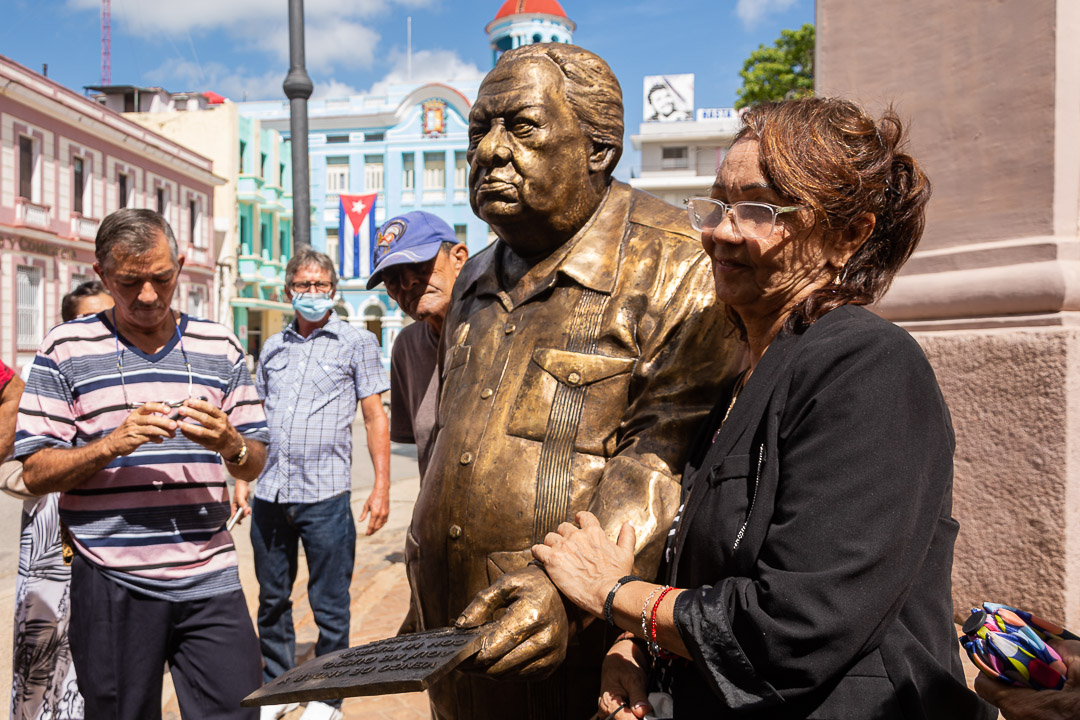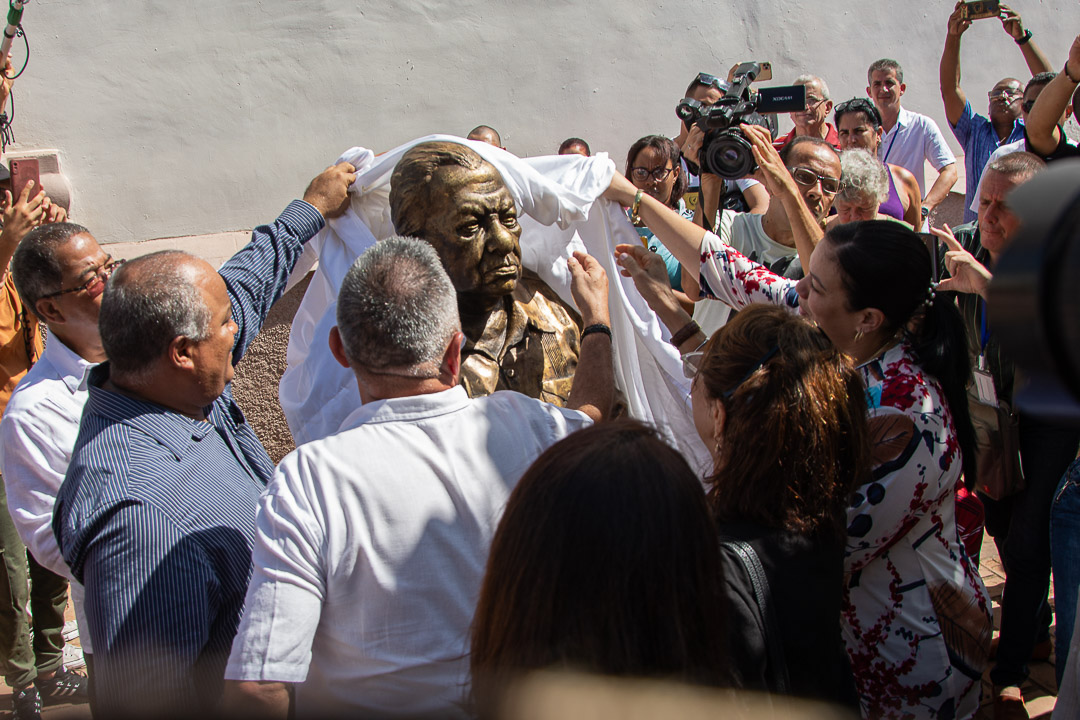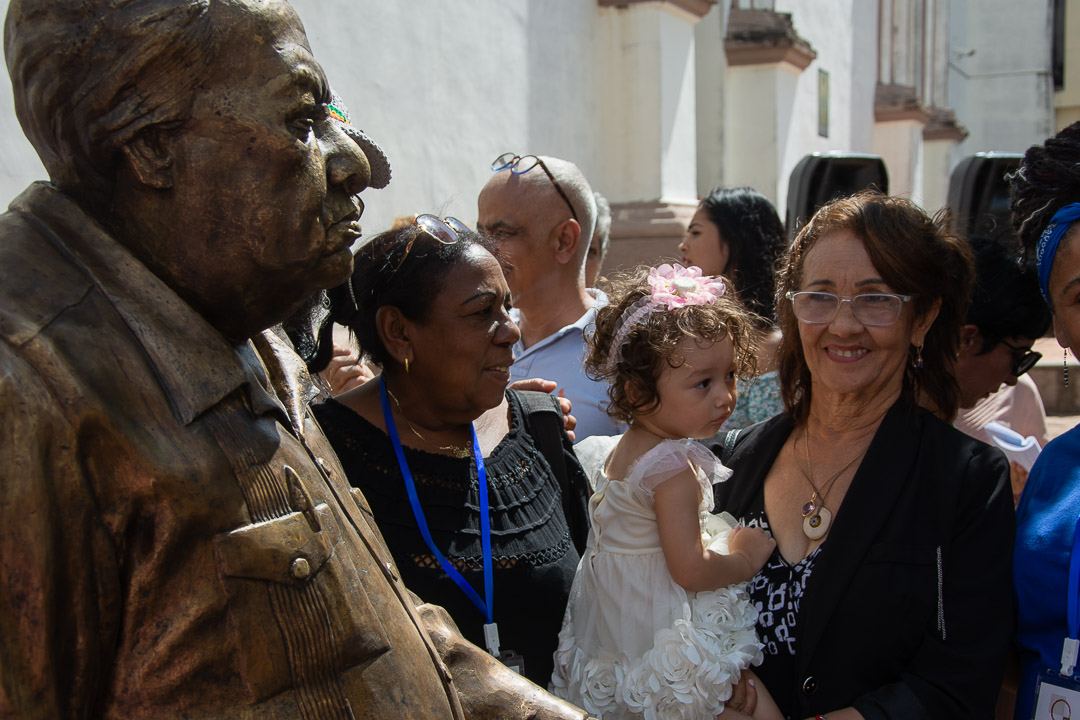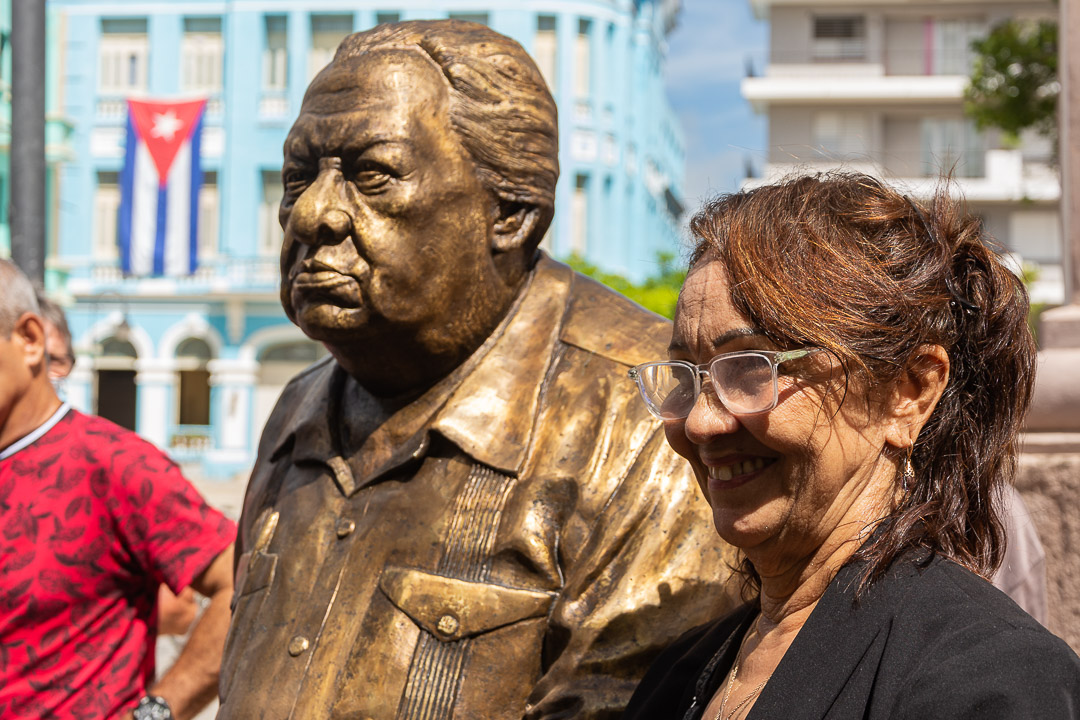CAMAGÜEY.- I want him to breathe, Martha Jiménez said to herself while she gave shape to the idea of a sculpture for the writer Nicolás Guillén (1902-1989), finally unveiled con July 10 in his hometown, on his 120th birthday.
The piece represents a walker, life-size, in correspondence with the protagonist's manifest taste for touring the city, as emphasized in My Dear Camagüey's Streets, the title of a poem and journalistic chronicle.
I saw him here walking. I was, I think, 28 years old. I have the image of how he passed very slowly, declared the renowned author of the sculpture group of the Plaza del Carmen, Unesco Prize, to the press.
"A portrait is a camera, but I work as it comes out, as I saw it, as I felt it", she explains to one side of the Church of Our Lady of Mercy, near the curve where they placed the piece that is ready to cross the Ignacio Agramonte street.

She then thought of the complement: I can't leave him without the verse, without the work. I make the composition of the parchment in hand, the pen in pocket, the guayabera, and the action of walking, like a sidereal movement.
That Guillén of about 60 years of age, stage of full literary creativity, carries in one hand a document with the following verses of the Camagüey's Elegy:
I come from walking and here I stay,
with my people.
I come with my memories,
I come with my wounds and my verses.
Although Martha Jiménez starts from her memory of the elderly intellectual, in the chronicle Camagüey, the sick city, published in the Orbe Magazine, on February 5, 1932, the young Nicolás Guillén recounted:
" (...) As night descends on the town, it could be said that it gathers, and shrinks until it remains in the central yolk: Soledad, República, Plaza de las Mercedes. People flock to these places to discuss the events of the city. That Las Mercedes Square is a popular athenaeum where theories are exposed, systems are refuted and even revolutions are forged. There, next to a mailbox located on the corners of Cisneros, we met the writers and poets of Camagüey of 1920- Arturo Doreste, Adán Villa (recently deceased), César Luis de León, Menéndez Roque, and this server- to secretly confess that the << Sonatina>> is a beautiful work of art, or that the poet Villaespesa cutely stole more than one sonnet from Camoens..."

The act of official delivery of the sculpture to the public space was attended by political and government authorities, the participants of the 13th Nicolás Guillén Colloquium and Festival, and, in particular, a concurrence of neighbors who referred to the popular entertainment that the National Poet of Cuba spontaneously received here.
Today's fear for me was when I would remove the veil and look at him. An artist, every time he does something, goes through the impression as if he had had a son. I'm over the scare, said the artist, attentive to everything, because apart from the press, the congratulations of the spectators arrived and her question came out, Did you like it?
─Martha, you highlight the popular figure in your work, Guillén with all his intellectual stature. Did you propose something specific to him?
─I wanted to do the long look and I did it in wax, for me, it was the best piece but it disappeared because the heat melts it. I keep the photo of that long look. I don't know if you've seen it? It was one of the things I wanted from him.
─Tell us about the process, because you were afraid it wasn't ready...
─Of all my works with this one I had the greatest tension. Problems with electricity. Those guys from the Caguayo Foundation in Santiago de Cuba are heroic, honestly. It was necessary to wait more than 72 hours for it to give the power consecutively. I don't know how Guillén is there, because the temperature never reached it, there was no electric power.

─The work was yours until today. Now it begins to be of the people. From the experience with the group of Carmen, what could happen with your Guillén?
─Now they are opinions, criteria. I came last night to see if there was any problem. What moved me the most was that some children and young people over there said “Look at Guillén. There's Guillén."
Martha Jiménez, with the involvement of several institutions and entities of the territory, fulfills the old dream of a sculpture for an illustrious son of Camagüey, presented as a project by Rebeca Burón from the University of the Arts.
Nicolás Hernández Guillén, great-nephew of the National Poet of Cuba and president of the homonymous Foundation, senses that the work will be a meeting point in the Workers' Square, a daily way of walking with Guillén.
Translated by Linet Acuña Quilez



